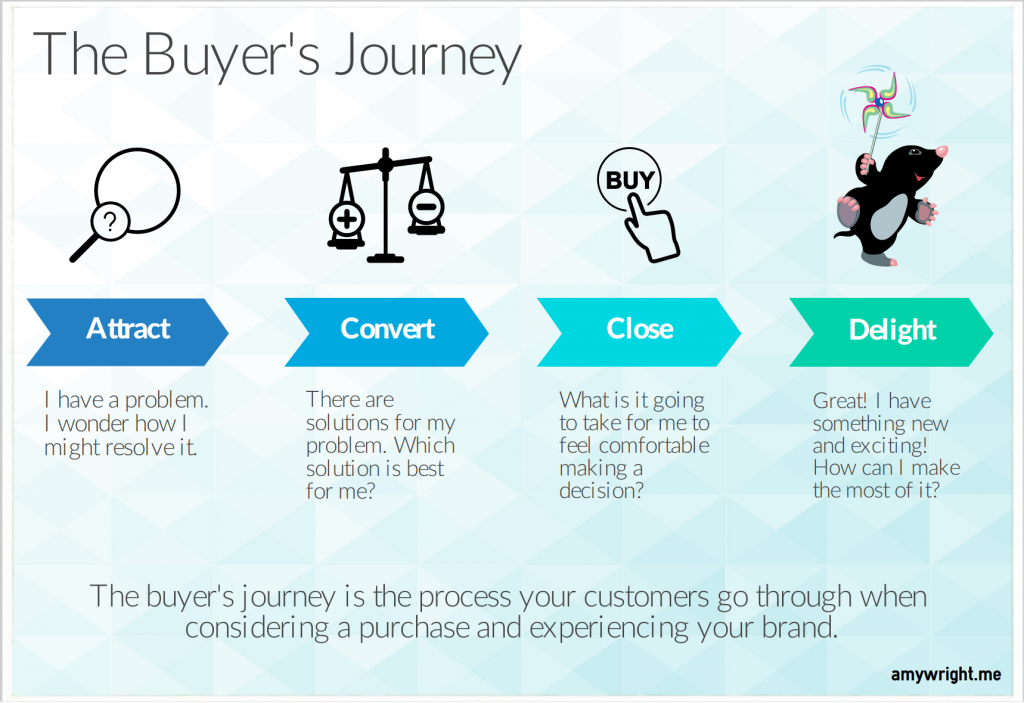
Last updated February 21, 2019
Just as your body needs a regular supply of nutritious food and exercise, your website needs up-to-date, quality content so it can help you build a thriving business.
However, planning, creating, and maintaining top-notch content is time-consuming. So clever marketers are strategic about the content they choose to build. And they master the art of repurposing content so they can extract more value from their work.
What is Content Repurposing?
Content repurposing is when you take content you already created and change it, so it suits a different goal.
You spend countless hours crafting content that will help you build trust with your audience. You research topics and carefully design each piece to educate your readers and encourage them to explore what you offer. Creating new content is rewarding, but it’s a lot of work. So why build an amazing piece of content, publish it, and leave it to gather dust?
Content repurposing involves taking the same information you used in one piece of content and repackaging it to appeal to a different audience or to serve a different purpose. This allows you to create more resources for your customers and expand your reach with less work.
Why Should You Repurpose Content?
Repurposing content is certainly efficient, and that might be all the justification you need. But there are other (arguably more important) benefits.
Content marketing is all about meeting your customers with the information they need when they need it. However, the type of content your customers need differs based on personal preference and what they wish to learn during each stage of their buyer’s journey.

If you share too much during the early stage of the buyer’s journey, you can overwhelm your customers. And if you share too little, or if you present the information in a way that doesn’t resonate with them, they will look somewhere else for answers.
For instance, early in the buyer’s journey, customers may recognize that they have a problem, but they may not be looking for a specific solution. This is when educational content is useful. Provide them with the information they requested and point them to additional resources where they can learn more.
As this person become more knowledgeable, however, they might begin to seek solutions. At this point, you can cover the same topic in a different way – perhaps comparing the different methods for resolving their problem in a detailed guide. Although you will use some of the same information in both pieces of content, the way you present that information will differ based on the buyer’s need.
To take this a step further, everyone is different. Some people like to read blog posts, while others prefer podcasts or webinars. Repurposing content into several formats will allow you to reach people with different consumption preferences. The educational content I mentioned above, for example, could be presented as a blog post. With a few tweaks, however, the same information could also be repurposed into a podcast or video.
Repurposing content allows you to:
- Build a more comprehensive and diverse collection of content.
- Expand your reach to a wider audience.
- Meet the needs of your customers with the information they seek at different stages of their buyer’s journey.
- Develop a more efficient and scalable content operation.
Content Repurposing Examples
Opportunities for content repurposing are everywhere. And the best part is that you can start with the content you already have. Here are three ways you can begin repurposing content today.
Break large pieces of content into smaller ones.

Some organizations create one (or several) substantial pieces of content that target the most important keywords for their business. Content marketers refer to these pieces as “cornerstone content.” Ideally, this content is well-researched and well-written to demonstrate your knowledge and attract customers. We build this content to harness the synergies between content marketing and SEO.
Cornerstone content is great. But you’re probably not the only one who wants to rank for those keywords. And if you don’t have a strong foundation, you may find it difficult to gain traction. Targeting high-volume, competitive keywords before ranking for smaller ones is like jumping off the high dive before you’ve learned to swim. You need to lay the groundwork before you can expect to succeed.
So, build a supportive base for your cornerstone content by repurposing it! Break that content into smaller pieces that target less competitive (but complimentary) keywords. Then, be sure to include a link to the cornerstone piece.
For example, imagine you offer a SaaS solution that allows people to create beautiful business documents (like proposals, brochures, or reports) in minutes. One of the important keywords for your organization is the term “business proposal templates.”
You build a piece of cornerstone content in your resource section to target this term. It discusses the topic in-depth and shares important findings from a study you conducted when you were developing your product. As a call-to-action, it includes downloadable business proposal templates in exchange for an email address.
The possibilities here are endless, but to get you started, here are a few repurposing ideas that can help you support the success of this resource:
Repurposing content for social media.
- The original research you shared in this piece is priceless! Fill your social media queue by citing individual findings from the study. Just be sure to also include a link to the full resource to generate awareness and encourage downloads of the templates.
- Spark discussions in a Facebook or LinkedIn Group by bringing up these same findings.
Repurpose the contents of the report into different formats.
- Create and publish a SlideShare presentation with the same information presented in the resource.
- Ask one of your executives to share the presentation at an industry event.
- Record a video of the presentation and share it on YouTube.
- Offer to be a guest speaker on a podcast or radio program where you can present your findings and point listeners to this valuable resource.
Repurpose portions of the report into blog posts.
Then submit them as guest blogs to other publications or publish them on your own site, LinkedIn, or Medium. Here are a few suggestions.
- Write separate posts for each of the business proposal templates you created, explaining what they are and how they should be used.
- Provide a deep dive into certain findings from the study and explain what they mean to your customers.
- Write a post that summarizes what you published on SlideShare and embed a link to the presentation.
Combine small pieces of content to create cornerstone content

Some organizations have embraced blogging but have never been able to invest resources in the creation of cornerstone content. When this is the case, there are often opportunities to combine several smaller pieces of content (that address the same theme) into one that’s more substantial.
This can be a huge opportunity. Blog posts disappear into your archives over time. Why not use that same content to create longer-lasting assets for your website? Here are some examples:
- Combine 3-5 blog posts into a comprehensive guide or eBook. Then add an introduction and transitional language to tie it all together.
- If you have a target audience that’s more technical, repurpose the guide or eBook once again. Adjust the wording to be more formal and turn it into a whitepaper.
- If you have a big collection of blog posts on a specific topic, use that content to record a series of videos and offer them as an online course. Or, if that’s not your thing, share them separately on YouTube to create more visibility for your brand.
Repurpose strong, individual pieces of content into different formats.

Content producers often have a preferred medium. Perhaps you feel most comfortable with the written word and like to produce blog posts or ebooks. Or, maybe, you prefer giving presentations and favor the creation of videos or podcasts.
There’s nothing wrong with embracing your strengths, but sticking to one format will limit the reach of your content.
Some of your target customers might not like to read. Others may resist videos because they don’t feel comfortable playing them at work. Repurposing content into different formats can help you reach a whole new audience.
You may need to push yourself here, but it’s worth the effort. For example, whenever possible, I like repurposing blog posts into infographics or cheatsheets, like the one in this post on image SEO. This makes the content more useful for my readers, who can download and save the image for future reference or pass it along to a colleague. But the image itself also becomes a valuable asset for my business. I can use it to promote myself on social media, and I can optimize it for search, which will improve my ability to rank.
So consider these different formats (and any others you can imagine).
- Blog Posts
- eBooks
- Guides
- Videos
- Podcasts
- SlideShare Presentations
- Webinars
- Live Presentations
- Infographics
- Images for Social Media (tips, quotes, statistics, charts, diagrams, etc.)
- Downloadable PDFs
Could you recraft your content into any of these other forms? If so, repurpose it!
What Are You Waiting For? Master the Art of Repurposing Content.
Content repurposing is the act of taking content you already created and changing it so it suits a different goal. And it’s a huge opportunity to make your content work harder for you.
Repurposing content is an important part of any content marketing strategy. It allows you to create a stronger online presence by growing and diversifying your content, expanding your reach, and improving your ability to satisfy your customers (and the search engines) at scale.
Above are just a few content repurposing examples, but I’m sure you could come up with plenty of your own. Share your suggestions in the comments below, or feel free to contact me for help.


